Dendrology Trees Week 1
1/16
There's no tags or description
Looks like no tags are added yet.
Name | Mastery | Learn | Test | Matching | Spaced |
|---|
No study sessions yet.
17 Terms

Acer rubrum var. rubrum
red maple or soft maple
Aceraceae
Notes: Fruit type = samara. Specific epithet = red. Aceraceae = Maple Family. Fruits mature in the spring and are eaten by foxes and songbirds. Used to make crates and pallets.
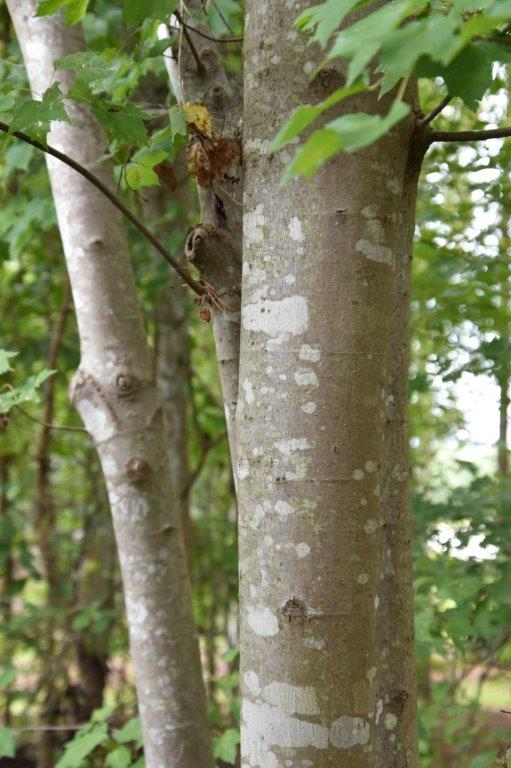
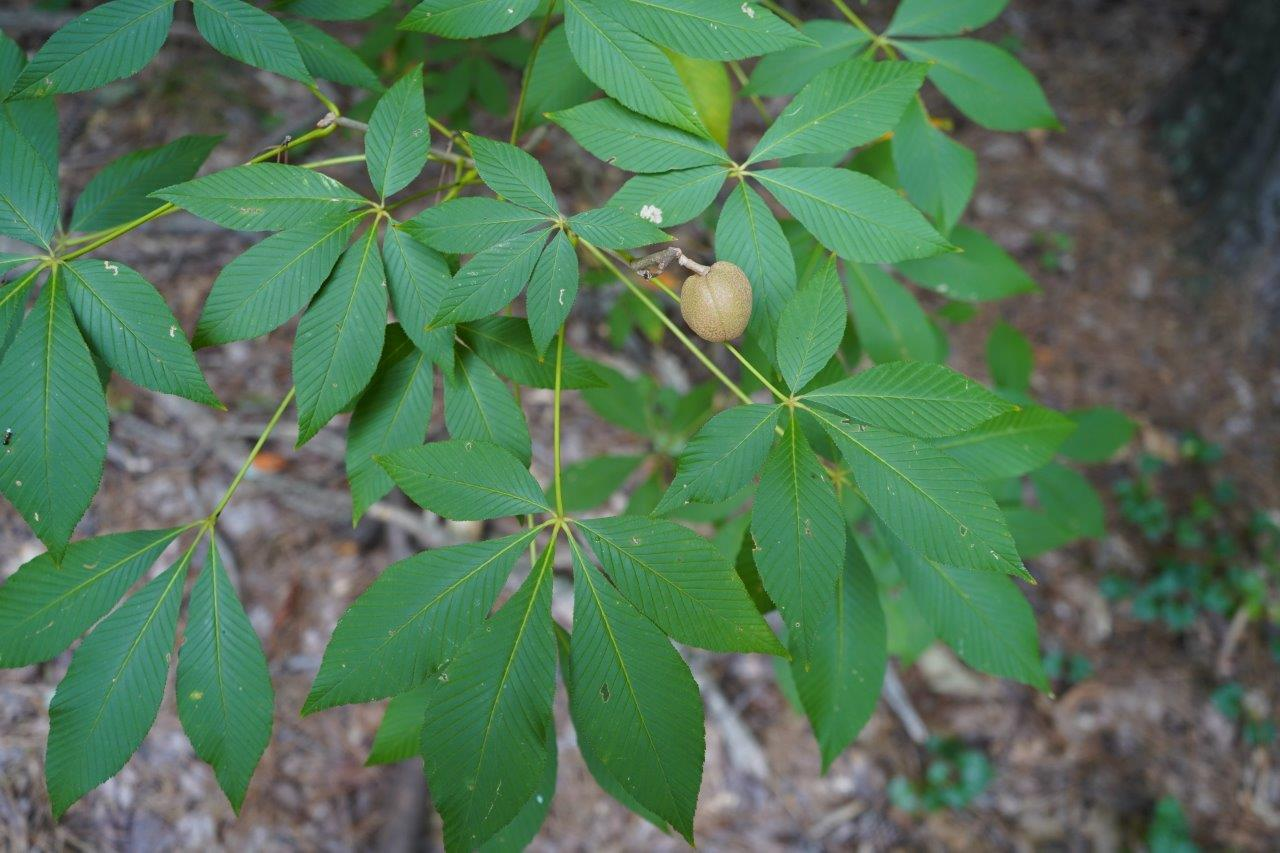
Aesculus sylvatica
painted buckeye
Hippocastanaceae
Notes: Fruit type = capsule. Specific epithet = of the forest. Hippocastanaceae = Horsechestnut Family. Buckeye wood is soft, used for wood carving. Seeds formerly used in taxidermy, hence the name “buckeye.” Leaves, flowers, seeds, and honey are poisonous when eaten by humans. Seeds eaten only by squirrels.
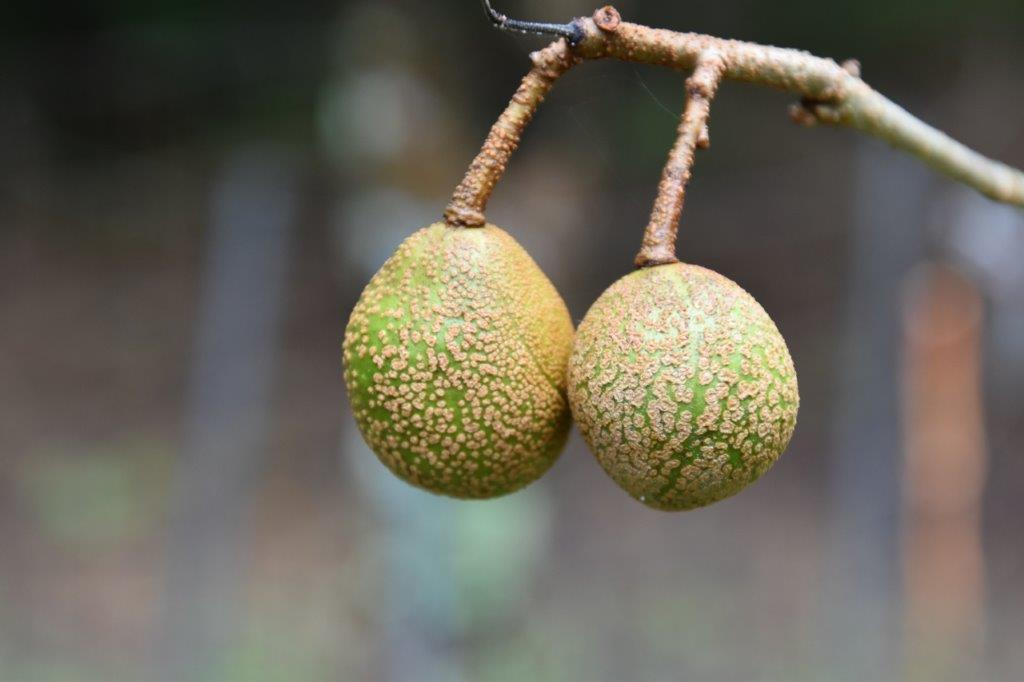
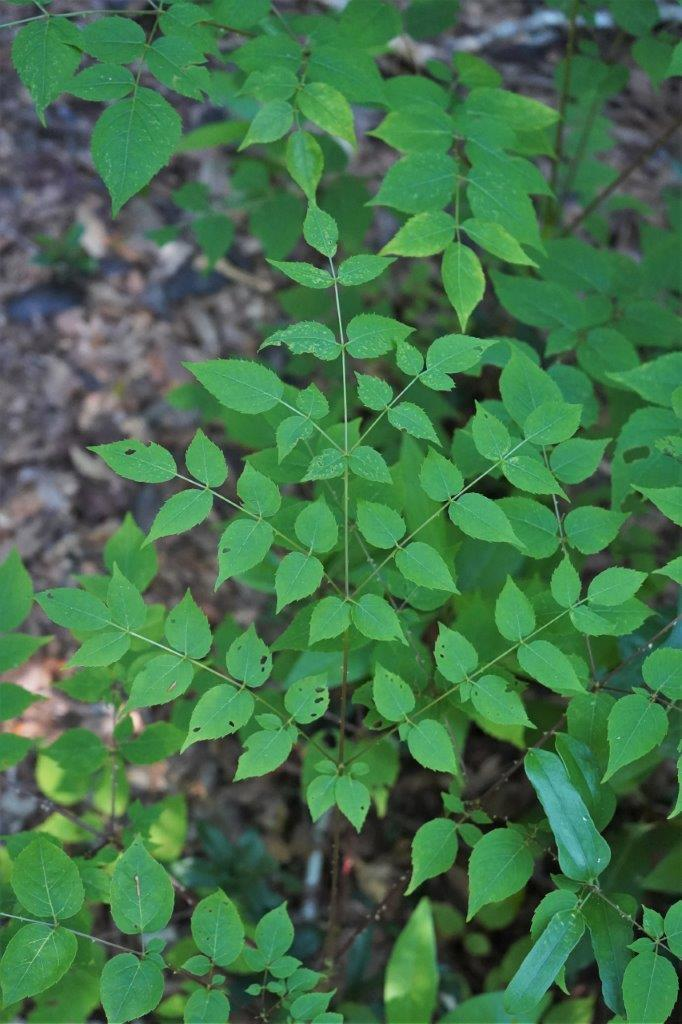
Aralia spinosa
Common name: devil’s-walking-stick, Hercules’-club
Family: Araliaceae
Notes: Fruit type = drupe. Specific epithet = spiny (referring to the prickles on leaves and stems). Araliaceae = Ginseng Family. Largest leaf in the North American flora. Young leaves formerly boiled and eaten like spinach. Fruits consumed by songbirds and small mammals, toxic to humans.
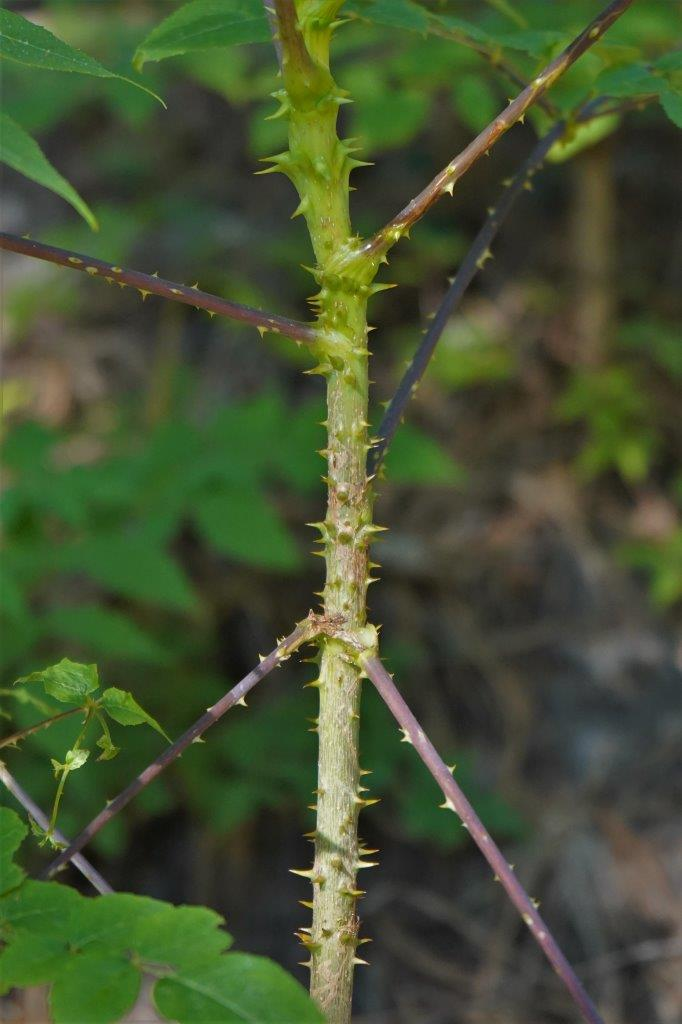

Carya tomentosa
Common name: mockernut hickory, white hickory
Family: Juglandaceae
Notes: Fruit type = nut. Specific epithet = densely wooly. Juglandaceae = Walnut Family; in the “true” hickory group (=Eucarya). Wood is dense but shrinks when dried - used in agricultural equipment, tool handles, and firewood. Nuts eaten by bear, deer, fox, racoon, and humans.
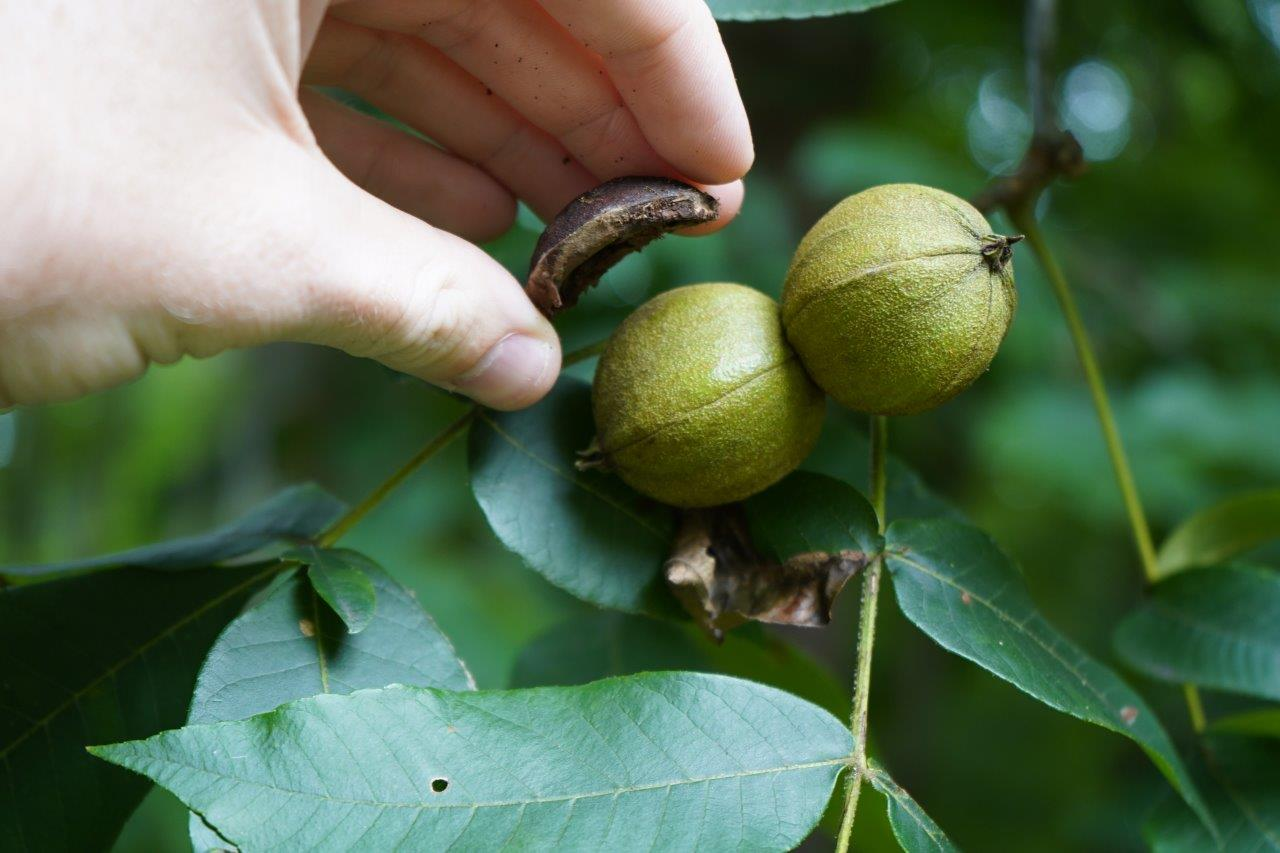
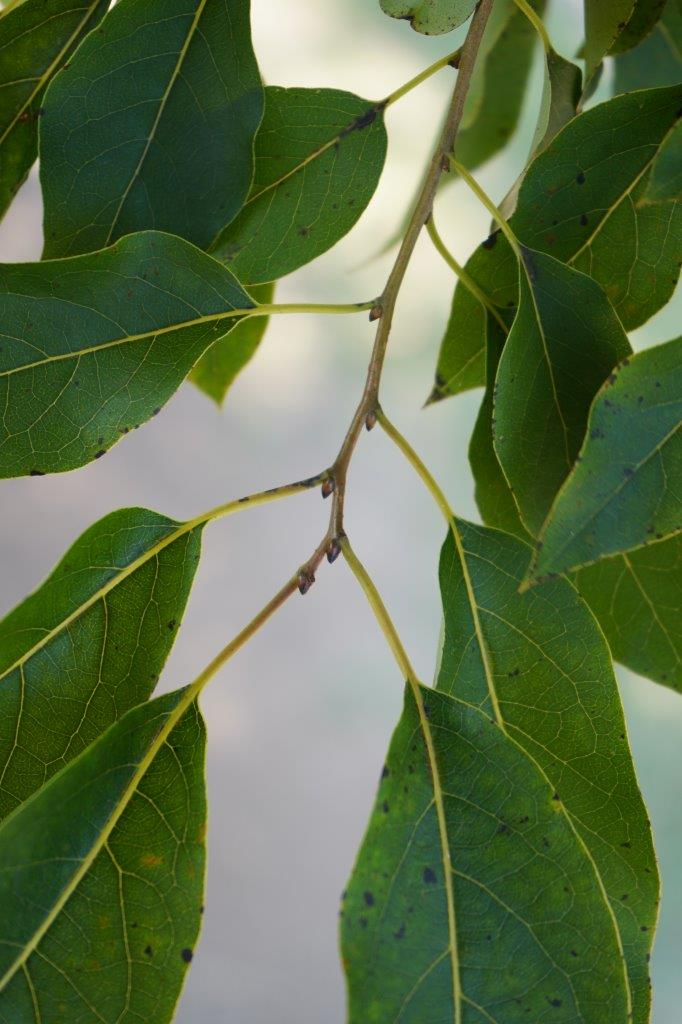
Diospyros virginiana
Common name: American persimmon, common persimmon, simmon
Family: Ebenaceae
Notes: Fruit type = berry. Specific epithet = of or from Virginia. Ebenaceae = Ebony Family. Dioecious. Fruit eaten by many species, especially opossum, raccoon, fox, bears, and white-tailed deer. One of our hardest and heaviest woods, formerly used for golf club heads.
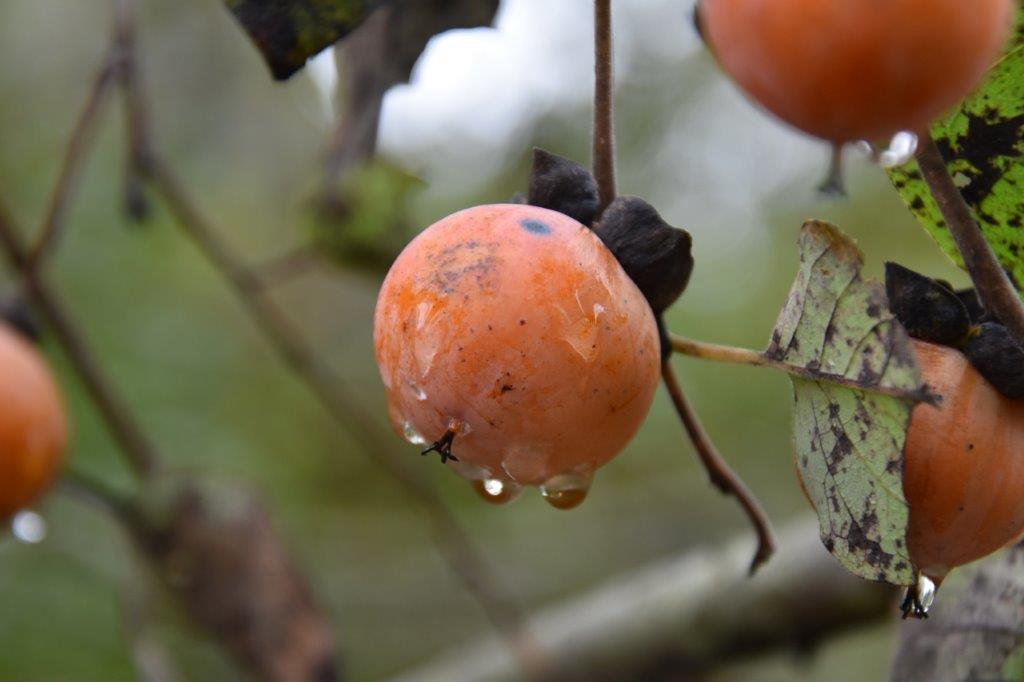

Gleditsia triacanthos
Common name: honeylocust
Family: Fabaceae
Notes: Fruit type = legume. Specific epithet = 3-branched (referring to the thorns). Fabaceae = Pea, Bean, or Legume Family. Originally native west of the Appalachians in the Central US but widely naturalized. Sweet pulp in the pods eaten by Native Americans and used by settlers to make beer. Unlike other species in Fabaceae, does not have nitrogen-fixing nodules. Seeds eaten by white-tailed deer, hogs, opossum, and other mammal species. Commonly used in landscaping.
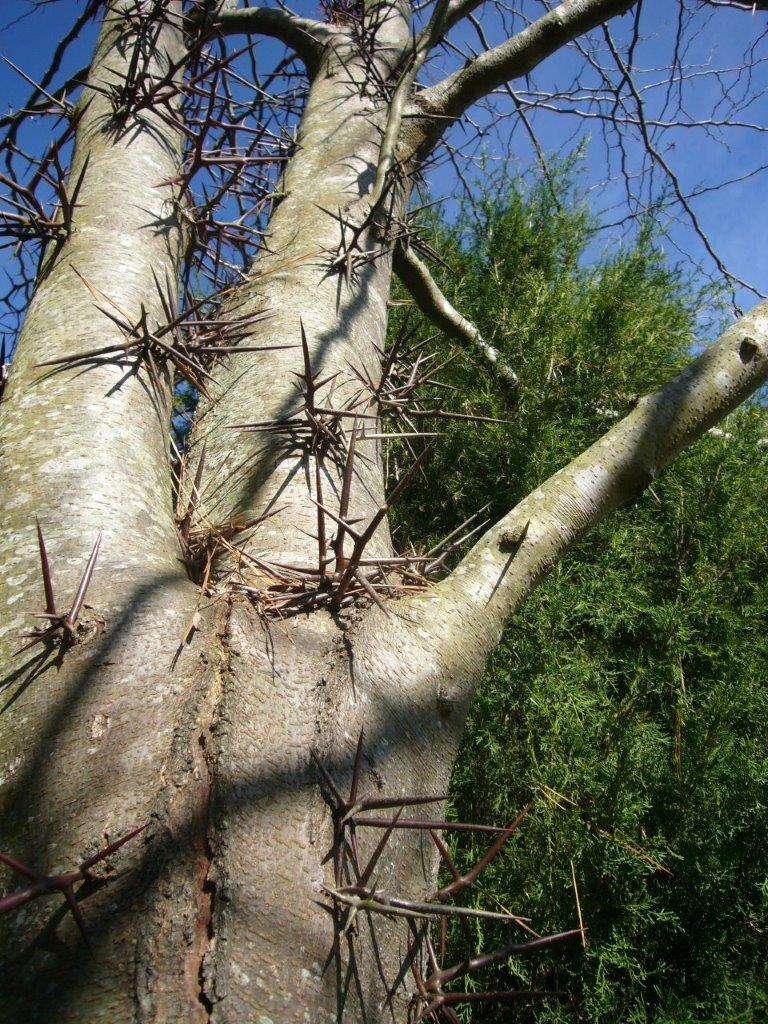
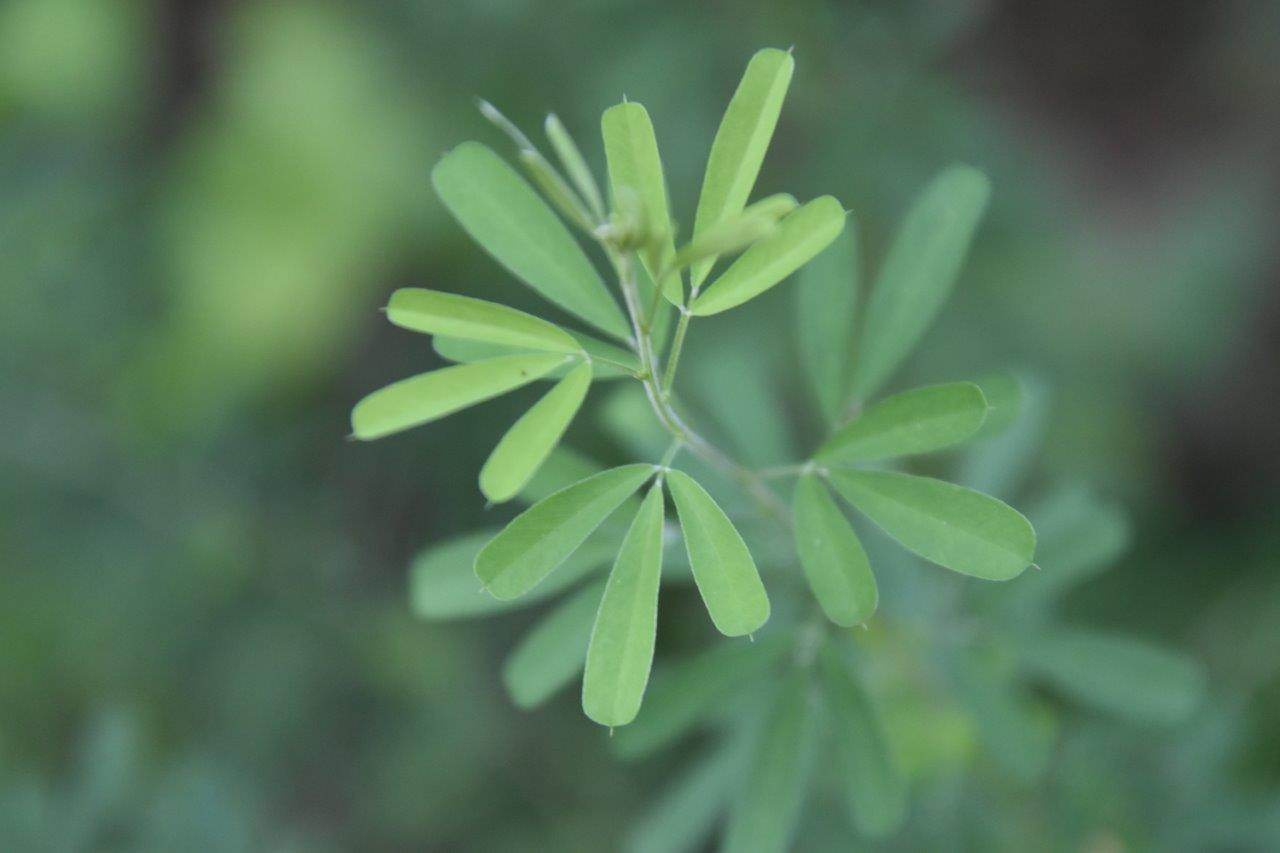
Lespedeza cuneata
Common name: lespedeza, sericea, Chinese lespedeza
Family: Fabaceae
Notes: Fruit type = legume. Specific epithet = wedge-shaped (referring to the leaflet bases). Introduced from eastern Asia and invasive throughout the South, flourishing in disturbed sites. Planted along roadsides, skid trails, and logging decks to help stabilize the soil, as a food plant for quail (not digestible by quail, though native Lespedeza spp. are), and for livestock forage (it is not palatable for livestock).

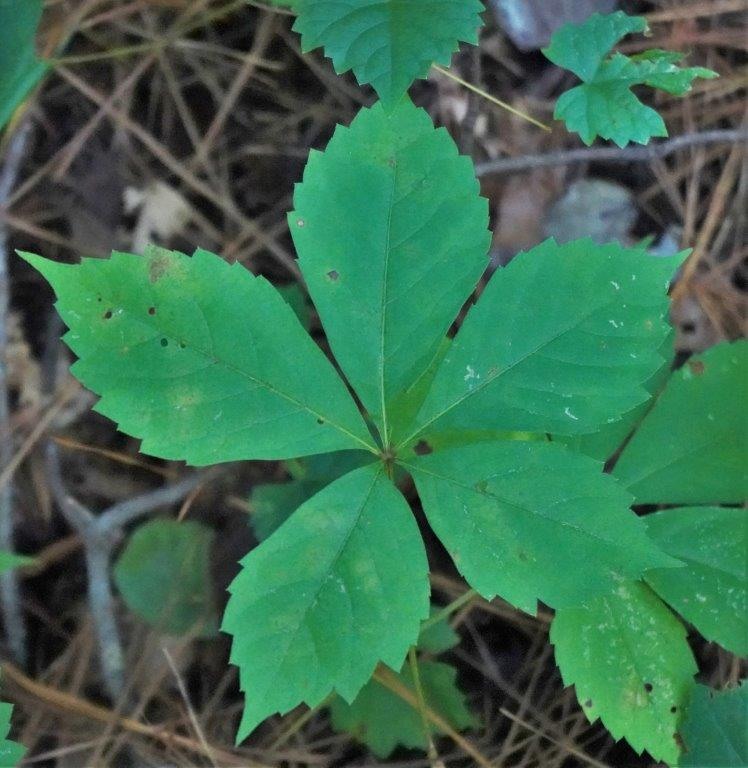
Parthenocissus quinquefolia
Common name: Virginia-creeper, woodbine
Family: Vitaceae
Notes: Fruit type = berry (dark blue to black at maturity). Specific epithet = five-leaved (but a misnomer because it has five leaflets). Vitaceae = Grape Family. Songbirds eat the fruit. Some people develop skin rashes from contact with leaves.
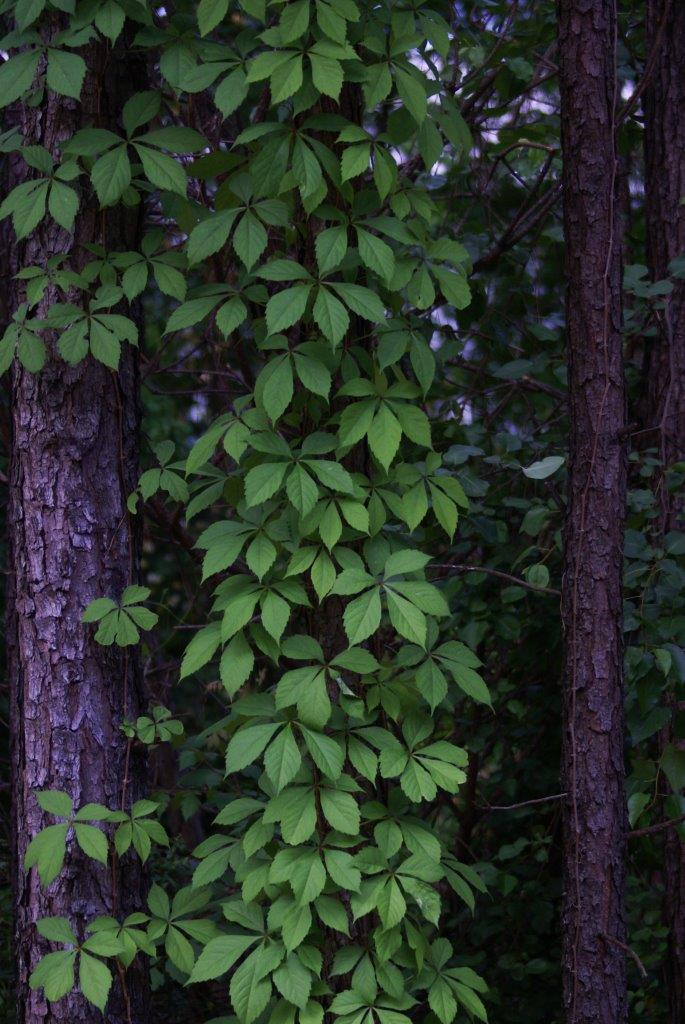
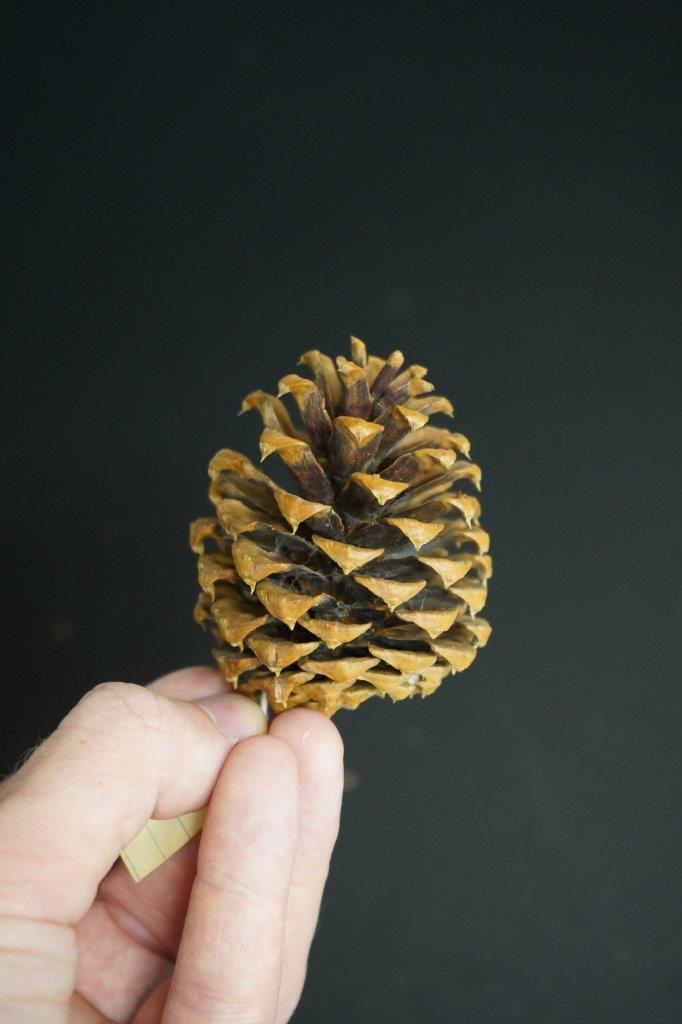
Pinus ponderosa
Common name: ponderosa pine
Family: Pinaceae
Notes: Cone scale = flat. Specific epithet = heavy (referring to the wood). Pinaceae = Pine Family. The most widely distributed pine in the West, with 4 subspecies across the range. Ranks second in total timber volume in the West. Wood use same as southern pines, primarily for lumber. Sold as western yellow pine and ponderosa pine.
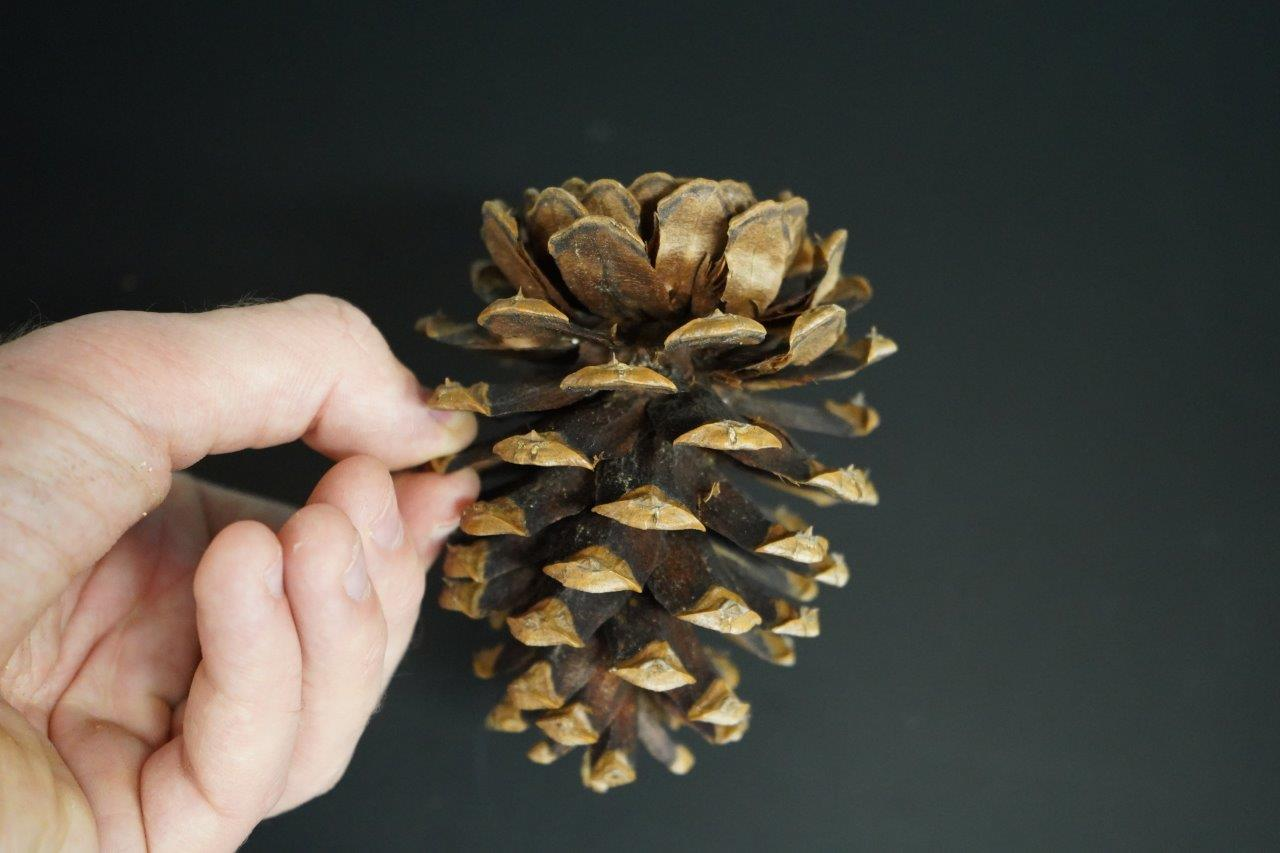

Pinus rigida
Common name: pitch pine
Family: Pinaceae
Notes: Cone scale shape = flat. Specific epithet = stiff. Pinaceae = Pine Family. Formerly used in New England as a source of tar. Wildlife use same as loblolly pine. Low-quality wood used for fuel and pulpwood.
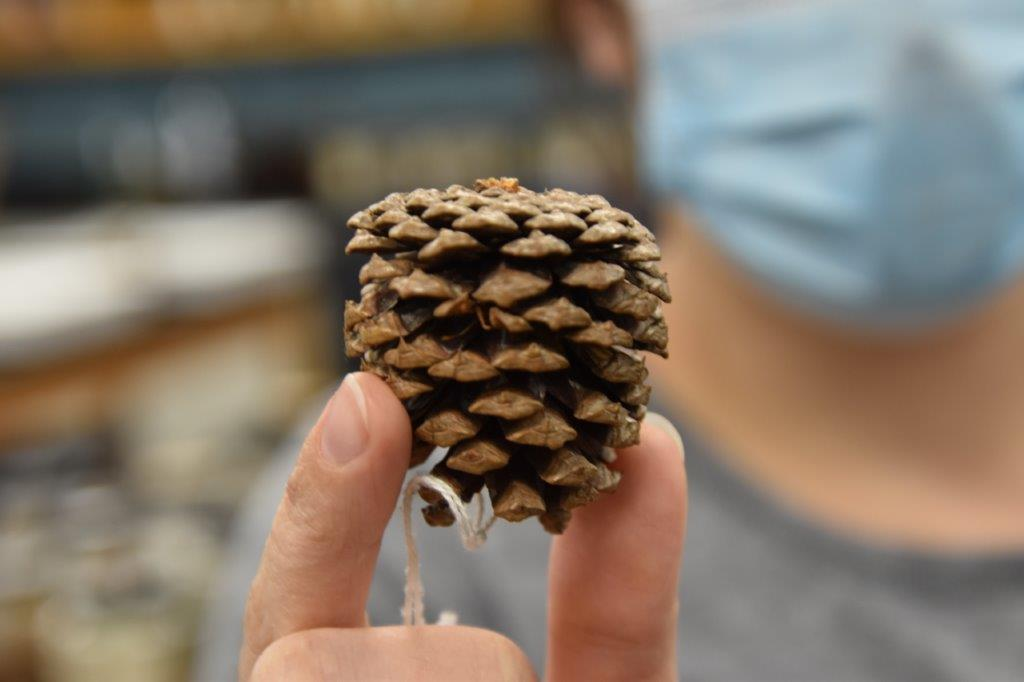
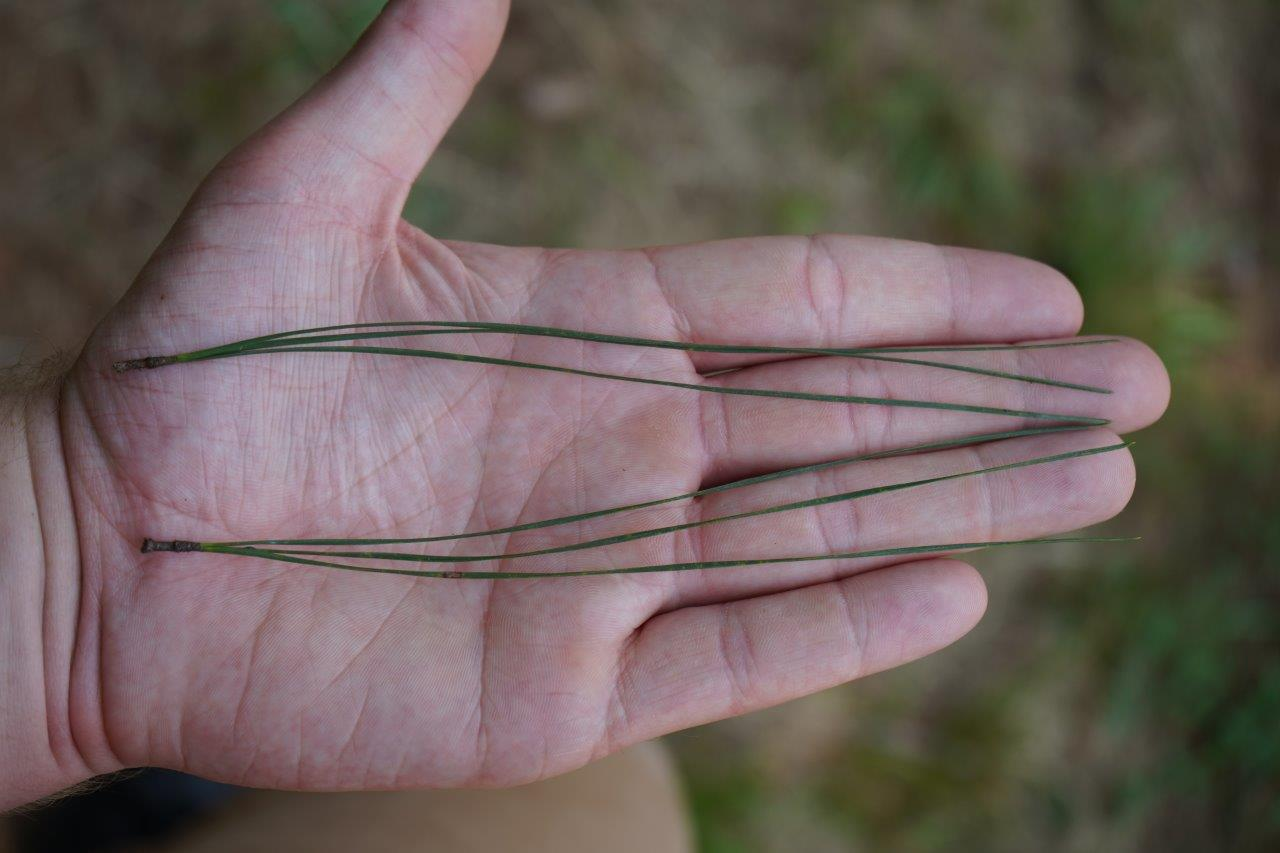
Pinus taeda
Common name: loblolly pine, loblolly, old field pine
Family: Pinaceae
Notes: Cone scale shape = flat. [Does not produce fruit, only seeds.] Specific epithet = torch wood (referring to the practice of lighting knots for illumination). Pinaceae = Pine Family. Sold as Southern pine, yellow pine, or Southern yellow pine. [NC is one of the top producers of lumber.] Most important lumber species in the US, used for pulpwood and treated lumber products. Seeds eaten by songbirds, game birds, squirrels, and chipmunks.
![<p>Common name: loblolly pine, loblolly, old field pine</p><p>Family: Pinaceae</p><p><span>Notes: Cone scale shape = flat. [Does not produce fruit, only seeds.] Specific epithet = torch wood (referring to the practice of lighting knots for illumination). Pinaceae = Pine Family. Sold as Southern pine, yellow pine, or Southern yellow pine. [NC is one of the top producers of lumber.] Most important lumber species in the US, used for pulpwood and treated lumber products. Seeds eaten by songbirds, game birds, squirrels, and chipmunks.</span></p>](https://knowt-user-attachments.s3.amazonaws.com/44344617-cb7b-4343-b257-ff413c9ba37f.png)

Prunus serotina
Common name: black cherry, wild black cherry
Family: Rosaceae
Notes: Fruit type = dark purple drupe. Specific epithet = late (referring to the time of flowering). Rosaceae = Rose Family. Wood is sold as cherry and is very valuable for caskets, furniture, and paneling. Highest quality (defect-free) lumber comes from Pennsylvania, New York, and West Virginia. High wildlife value; soft mast for grouse, songbirds, and black bear. Wilted foliage poisonous to livestock due to cyanide compounds.

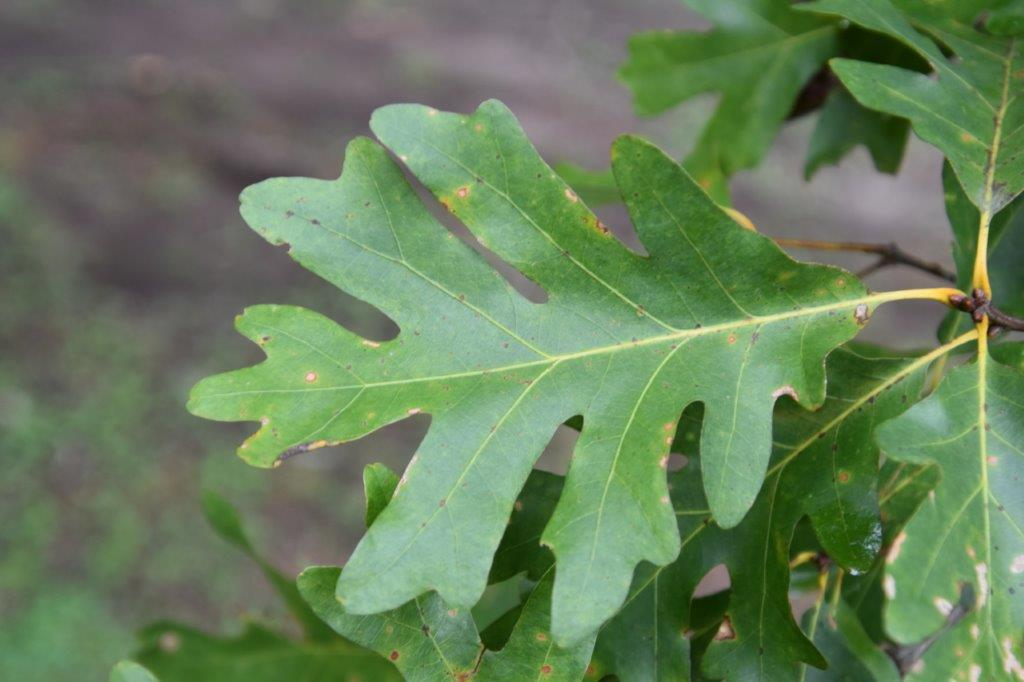
Quercus alba
Common name: white oak
Family: Fagaceae
Notes: Fruit type = nut. Specific Epithet = white. Fagaceae = Beech Family. Possibly the single most important wildlife food plant; low tannin acorns eaten by wood duck, game birds, small mammals, bear, and white-tail deer. All white oak acorns germinate in the fall. Wood sold as white oak and used for lumber (flooring, furniture, boats) and many other products. Valued for tight cooperage (able to store liquids due to tyloses) in barrels especially in liquor production.
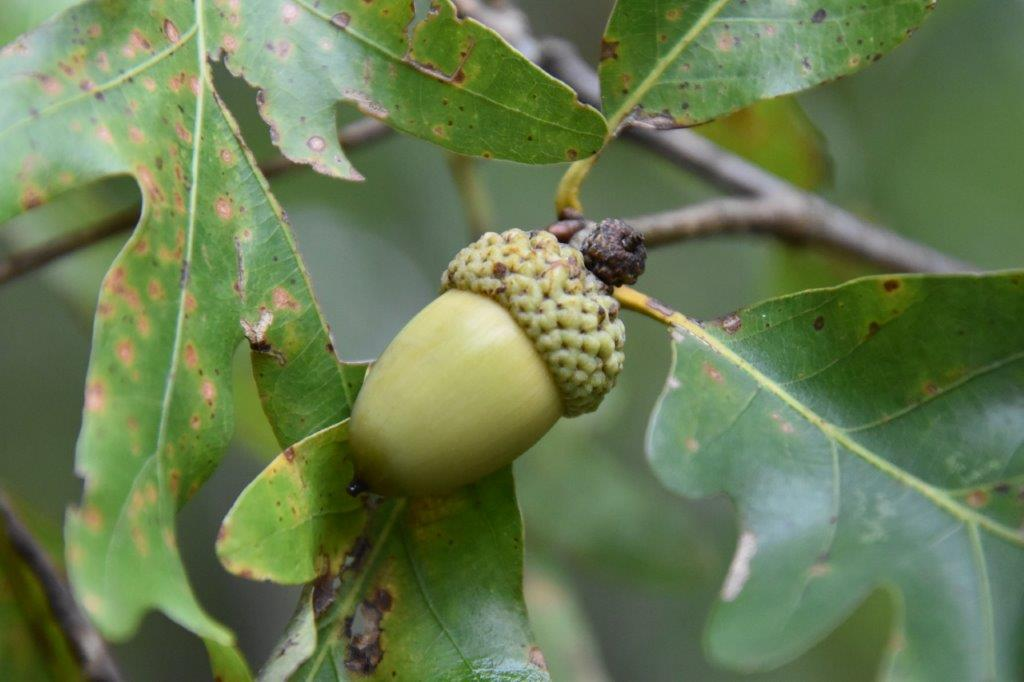
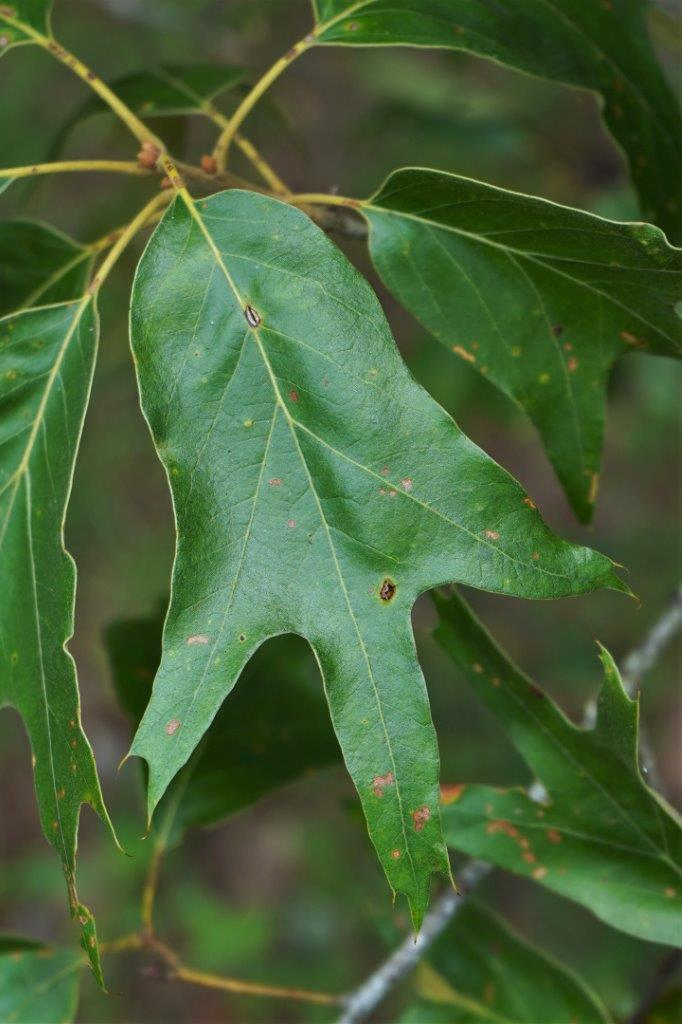
Quercus falcata
Common name: southern red oak, Spanish oak
Family: Fagaceae
Notes: Fruit type = nut. Specific epithet = sickle-shaped (referring to the curve in some leaves). Fagaceae = Beech Family. Lumber sold as red oak; used for lumber, railroad ties, flooring, furniture, crates, and barrels (suitable only for slack cooperage-storing solids). Acorns valuable to wildlife but preferred less than the white oak group due to tannin concentration. All red oak acorns germinate in the spring.
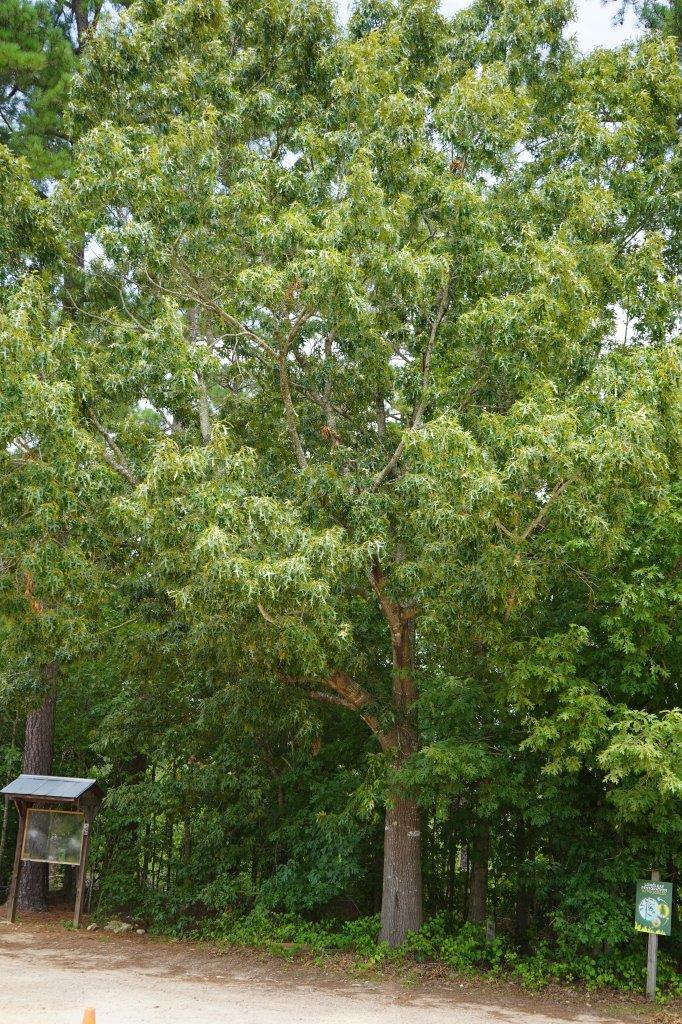
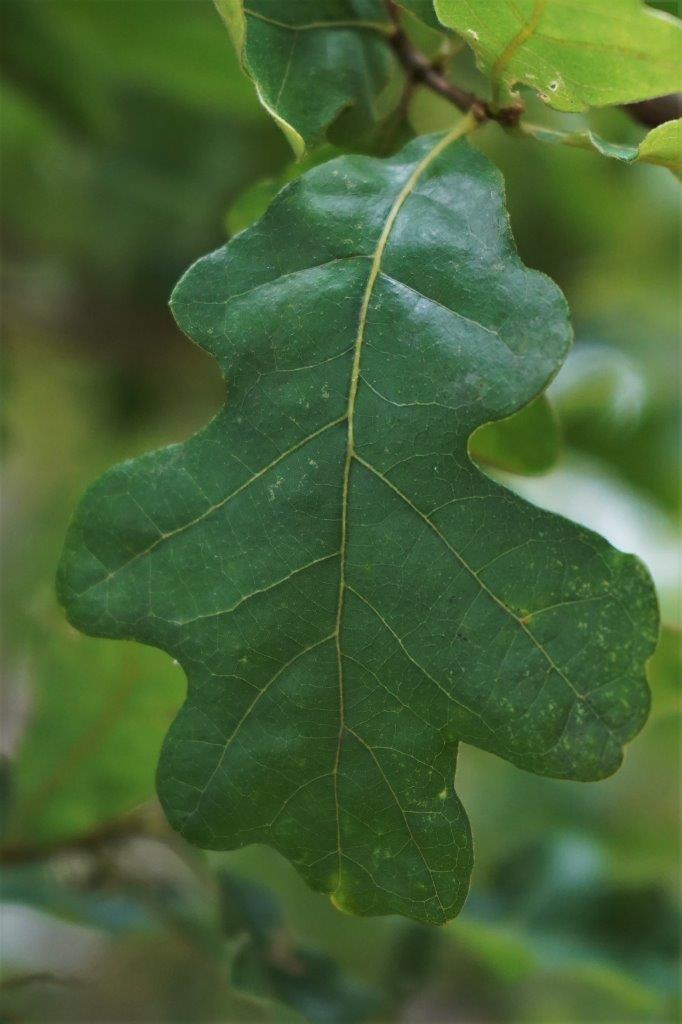
Quercus stellata
Common name: post oak
Family: Fagaceae
Notes: Fruit type = nut. Specific epithet = starred (referring to the hairs on leaf undersides). Fagaceae = Beech Family. Wood value lower than white oak due to low branching, short habit; used for fence posts. Associated with dry, open sites and rocky soils. Wildlife value similar to other white oaks.
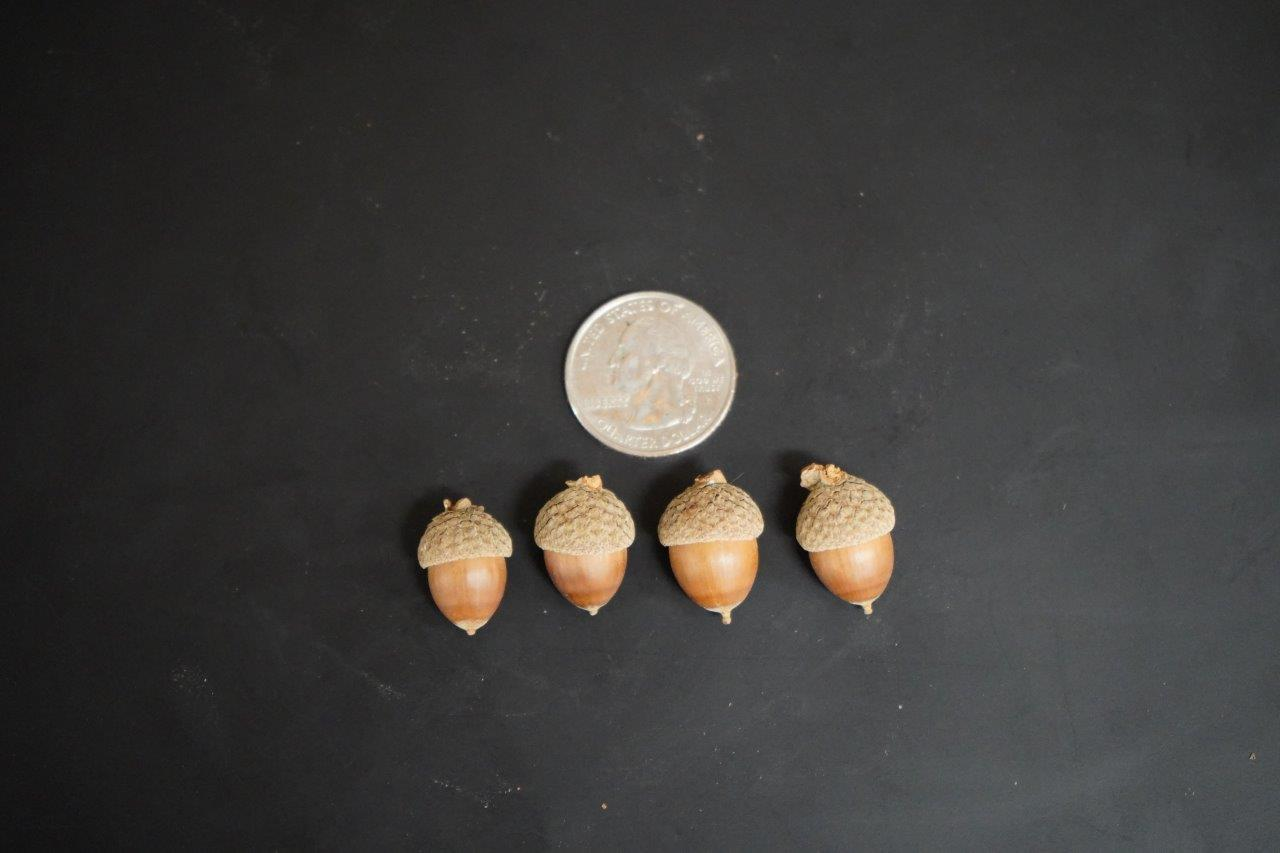

Rhus copallinum
Common name: winged sumax, shining sumac
Family: Anacardiaceae
Notes: Fruit type = red drupe. [formerly Rhus copallina.] Anacardiaceae = Cashew Family. Sexes borne on separate plants (dioecious). Fruit eaten by grouse, turkey, robins, and rabbits, but mostly in winter. White-tail deer browse the foliage. Bark and leaves used as a local source of tannin for tanning leather.
![<p>Common name: winged sumax, shining sumac</p><p>Family: Anacardiaceae</p><p>Notes: Fruit type = red drupe. [formerly Rhus copallina.] Anacardiaceae = Cashew Family. Sexes borne on separate plants (dioecious). Fruit eaten by grouse, turkey, robins, and rabbits, but mostly in winter. White-tail deer browse the foliage. Bark and leaves used as a local source of tannin for tanning leather.</p>](https://knowt-user-attachments.s3.amazonaws.com/5e9881f9-2d2a-4016-95ed-1344bc35db25.png)
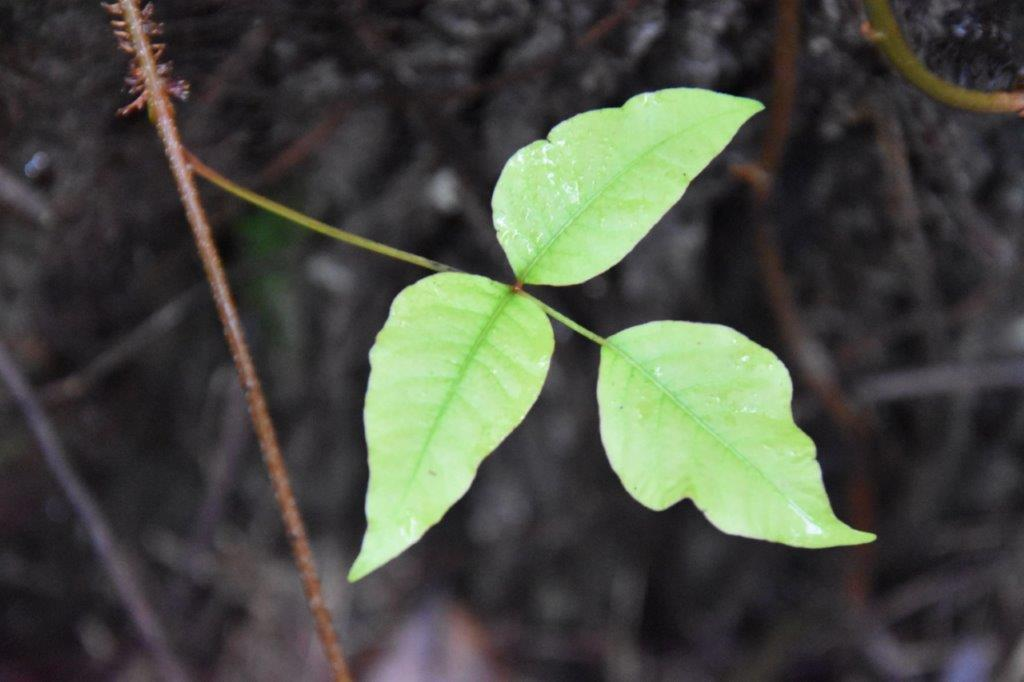
Toxicodendron radicans var. radicans
Common name: poison ivy
Family: Anacardiaceae
Notes: Fruit type = green-white drupe. Specific epithet = rooting (referring to the adventitious roots formed on climbing plants). Anacardiaceae = Cashew Family. Fruit eaten by songbirds and woodpeckers in winter. High preference deer browse. Most people develop skin rashes after contact with the plant due to an oil [called urushiol].
![<p>Common name: poison ivy</p><p>Family: Anacardiaceae</p><p> Notes: Fruit type = green-white drupe. Specific epithet = rooting (referring to the adventitious roots formed on climbing plants). Anacardiaceae = Cashew Family. Fruit eaten by songbirds and woodpeckers in winter. High preference deer browse. Most people develop skin rashes after contact with the plant due to an oil [called urushiol].</p>](https://knowt-user-attachments.s3.amazonaws.com/f0dab12d-6d78-431a-be74-6f99b19c6421.png)